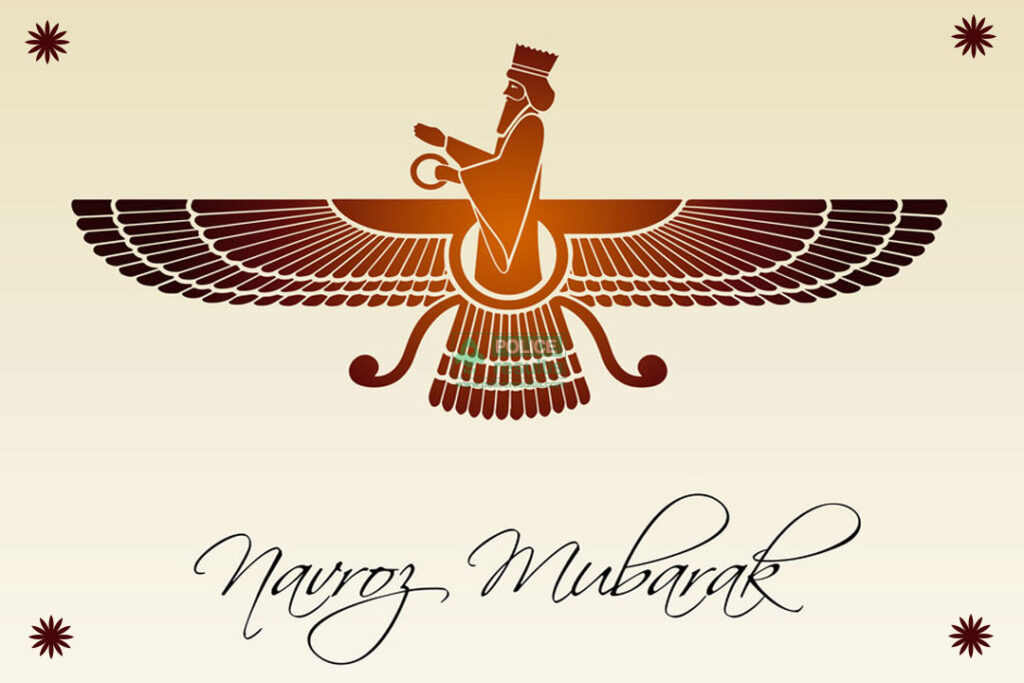
No último dia 16 de agosto a comunidade parsi da Índia celebrou o Navroz, o seu Ano Novo, o dia em que ela se compromete com a renovação da esperança. As residências são arrumadas com esmero, os indivíduos vestem roupas novas, trocam presentes e fazem doações para instituições de caridade. Nada muito diferente do Natal cristão. Tradição de 3000 anos, o feriado de Ano Novo parsi foi criado pelo profeta Zoroastro, de acordo com a lenda.
Mas, quem são os zoroastristas e os parsis?
O Zoroastrismo é considerado a mais antiga dentre as religiões monoteístas conhecidas, embora haja controvérsias a este respeito. Teve início com as revelações de Zaratustra, a quem os gregos chamavam de Zoroastro. Não há muitas informações sobre a sua vida; acredita-se que teria nascido em Sogdiana, no reino de Bactriana ou Karezmia, região que abrange hoje o leste do Irã, o Afeganistão e Turcomenistão.
Não está igualmente claro em que época ele terá vivido. A maioria das evidências linguísticas e arqueológicas aponta para o período entre 1500 e 1200 AEC. Alguns estudiosos acreditam, porém, que ele foi contemporâneo de Ciro, o Grande, que viveu no século VI AEC e fundou o império aquemênida da Pérsia.
A história conhecida de Zoroastro é plena de lendas que demonstrariam a sua natureza “especial”. Segundo elas, ao nascer, a criança não chorou; pelo contrário, riu sonoramente. No vilarejo havia um sacerdote que percebeu que aquele menino viria a ser um revolucionador do pensamento humano e enfraqueceria o poder dos “patronos” das religiões. Procurou, então, seu pai e disse-lhe que este fato era um mau presságio para a comunidade. Acrescentou que a criança teria um demônio dentro de si. Diante da incredulidade de seu pai, o sacerdote impôs, então, uma prova: acendeu uma grande fogueira, e na frente de todos, nela atirou o menino. Como ele não sofreu dano algum, o sacerdote ficou confuso.
Zoroastro foi levado, então, para um vale estreito e colocado na passagem de uma manada. O primeiro boi notou o menino e ficou parado sobre ele, protegendo-o; o bebê não sofreu um só arranhão. O sacerdote arquitetou outro plano: Zoroastro foi levado para a toca de uma loba que, ao invés de devorá-lo, cuidou dele até que sua mãe viesse buscá-lo. Diante de tantos prodígios o sacerdote, envergonhado, mudou-se do vilarejo.
Na juventude, Zoroastro indagava-se sobre quem seria o autor do universo e da humanidade. Um dia, enquanto meditava às margens de um rio, um ser de imensa beleza e envolto em intensa luz apareceu e lhe disse que Ahura Mazda, o Criador, o havia escolhido para anunciar a mensagem redentora para a humanidade. Ele então perguntou: “- por que eu? “. A resposta foi que Zoroastro possuía todas as qualidades necessárias: bons pensamentos, palavras e ações. Retornando à casa, ele contou o que lhe acontecera. Sua família acreditou no seu relato, mas os sacerdotes, temerosos de perder seus privilégios, decidiram dar cabo da sua vida. Ele então fugiu com vinte e dois companheiros; vagaram durante várias semanas, até chegarem à Bactria, atual Afeganistão, onde viveu até os 77 anos, quando foi assassinado por um sacerdote enquanto rezava diante do fogo sagrado.
O zoroastrismo tem seus fundamentos fixados no Avestá que, assim como a Bíblia, é uma coleção de livros sagrados que foram escritos durante um longo período e em diferentes idiomas. Reconhece a existência de duas divindades, que representam respectivamente, o Bem – Ahura Mazda – e o Mal – Arimã. Do embate entre elas, vence a divindade que representa o Bem. Os zoroastristas crêem também no Paraiso, na Ressurreição, e no Juízo Final. Esta crença veio a influenciar as outras religiões monoteístas que surgiram posteriormente, segundo os estudiosos. O símbolo que representa o Bem é o Fogo, que os fiéis consideram o elemento supremo da pureza. A chama – a luz de Deus (Ahura Mazda) -, que significa a mente iluminada, nunca deve ser extinta. O fogo sagrado é mantido no chamado Templo do Fogo / “Fire Temple”. Nenhum ritual ou cerimônia é realizado sem a presença desta chama. Em 2019, havia 167 Templos do Fogo no mundo, dos quais 45 em Mumbai, 105 no resto da Índia, e 17 em outros países.
O zoroastrismo foi a religião mais importante do planeta por mais de mil anos, e a “oficial” do império persa, desde cerca de 630 AEC até o século VII, quando os árabes invadiram a região e converteram a população ao islã.
E o que é ele hoje? Quem são os parsis?
Quando os exércitos islâmicos invadiram a Pérsia, entre 636 e 651 CE, muitos zoroastriastas emigraram para a região do Gujarat, na Índia, entre outros destinos, para preservar sua identidade religiosa e escapar à perseguição e à conversão forçada ao islã. Atualmente há cerca de 2,6 milhões de zoroastriastas em todo o mundo. Os Parsis – “parsi’ é o termo que significa “persa” em gujarati – são aqueles que se fixaram na Índia. A data exata da imigração é desconhecida. De acordo com a tradição, eles inicialmente se estabeleceram em Hormuz, no Golfo Pérsico, mas encontrando-se ali perseguidos, partiram para a Índia. Os primeiros ali chegaram ainda no século VIII e se estabeleceram primeiramente em Diu, que se tornaria um entreposto português na Índia, no século XVI, mas logo se mudaram para Gujarat, ao sul, onde permaneceram por cerca de 800 anos como uma pequena comunidade agrícola.
Entretanto, após o acordo de comércio firmado no início do século XVII entre o imperador Mogul Jehangir e o Rei James I, da Inglaterra, a Companhia das Índias Orientais obteve os direitos exclusivos de residir e construir fábricas na região de Surat, e em outras áreas do império mogul. Muitos parsis, que até então viviam em comunidades agrícolas aceitaram as oportunidades de emprego que lhes foram oferecidas e se mudaram para os assentamentos administrados pelos ingleses. Em 1668, a Companhia das Índias Orientais construiu um porto de águas profundas nas costas de Mumbai e para ali transferiu sua sede de Surat.
Os Parsis a acompanharam e logo passaram a ocupar postos de confiança em conexão com o governo e as entidades de obras públicas. Foi início da afluência econômica da comunidade, que a preserva ainda hoje. Nos séculos XVIII e XIX, os parsis emergiram como “as pessoas mais relevantes na Índia em assuntos educacionais, industriais e sociais”. A comunidade assumiu a vanguarda do progresso, acumulando vastas fortunas. Eles se tornaram igualmente grandes beneméritos assistencialistas e patronos de várias instituições de caridade, assim como de pesquisa.
Ao longo dos séculos desde que os primeiros zoroastristas chegaram à Índia, os parsis se integraram à sociedade indiana, mantendo, entretanto, ou desenvolvendo simultaneamente, seus próprios costumes e tradições distintas e, portanto, sua identidade étnica. Isto, por sua vez, deu à comunidade uma posição bastante peculiar: eles são índianos em termos de nacionalidade, língua e história, mas não tipicamente indianos em termos de consanguinidade, etnia ou de práticas culturais, comportamentais e religiosas.
Testes de DNA genealógicos realizados para determinar a pureza da linhagem apresentaram resultados mistos. Um estudo apoia a alegação parsi de que eles mantiveram suas raízes persas, evitando o casamento com as populações locais. Na realidade, na medida em que a tradição impede o casamento fora da religião/etnia, a definição de quem é, e não é, Parsi, é uma questão de grande controvérsia dentro da comunidade. É geralmente aceito que um Parsi é a pessoa que: (a) é diretamente descendente dos refugiados persas originais, e (b) formalmente admitida na religião através da cerimônia do “navjote” (colocação do cordão sagrado /”sacred thread”, que deverá ser portado sob a roupa pelo resto da vida). Não é possível a conversão.
De acordo com o Censo da Índia de 2011, existem 57. 264 parsis no país, apenas. Segundo a Comissão Nacional de Minorias, há uma “variedade de causas responsáveis por esse declínio constante da população da comunidade”, sendo as mais significativas a ausência de filhos e a emigração. Uma taxa de natalidade mais lenta do que a de mortalidade é responsável pelo resto: a partir de 2001, os parsis com mais de 60 anos representam 31% da comunidade. Apenas 4,7% da comunidade tem menos de 6 anos de idade, o que se traduz em 7 nascimentos por ano por 1000 indivíduos. Projeções demográficas calculam que até o ano de 2021 esta população será de apenas 23.000 pessoas. O Parsis então deixarão de ser considerados como uma comunidade pela legislação indiana, e serão classificados como “tribo”.
No entanto, esta comunidade em declínio é até hoje responsável por algumas das maiores fortunas da Índia, todas comprometidas com a benemerência e o amparo à pesquisa científica e à sociedade. Muitos dos maiores empresários indianos são parsis, Entre os mais reconhecidos internacionalmente estão os clãs Tata e Godrej.
Em termos pessoais, nesta minoria estão alguns dos meus melhores amigos de vida, indianos, ou não. A qualidade intelectual além de caráter, destes indivíduos e o compromisso e dedicação deles para com os outros foi um dos principais motivos por eu ter-me afeiçoado tanto à Índia, minha “matrika”. Eles foram roteiro e guias!
NAVROZ MUBARAK!!!
Doutor em Direito Internacional Público em Paris. Ingressou na carreira diplomática em 1976, serviu nas embaixadas de Bruxelas, Buenos Aires, Nova Déli, Washington, Pequim, Tóquio, Islamabade (onde foi Embaixador do Brasil, em 2004). Também cumpriu missões transitórias no Vietnã e Taiwan. Viveu 15 anos na Ásia, para onde orientou sua carreira por considerar que o continente seria o mais importante do século 21 – previsão que, agora, vê cada vez mais perto da realidade.
